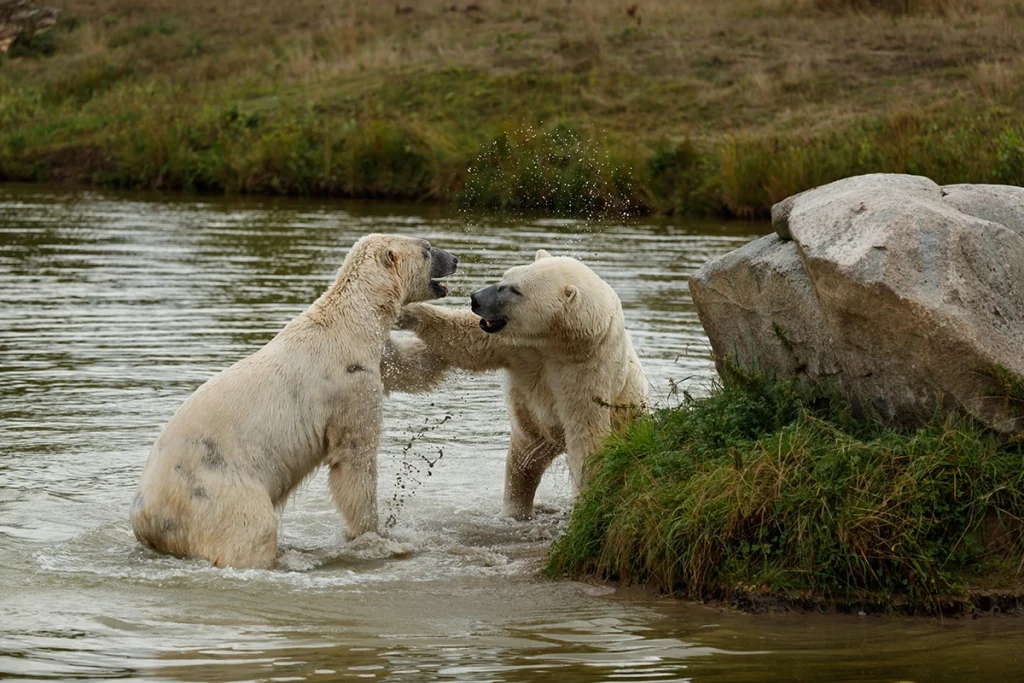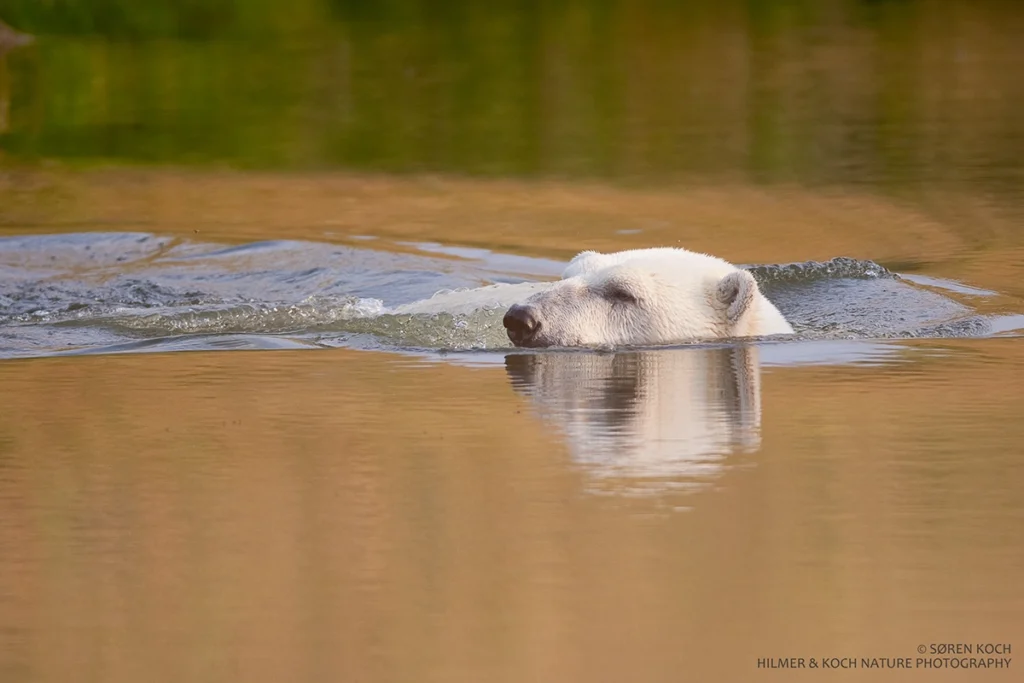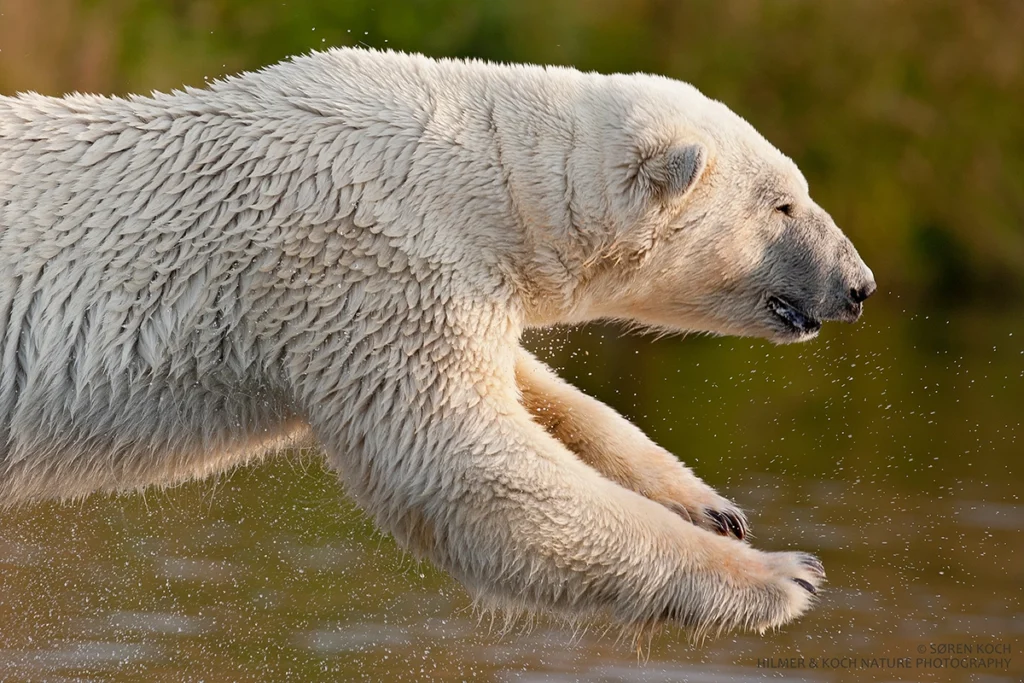1
2
150-500 kg
3
Tundra, ice and water
4
100-150 cm
5
7-9 mos.
The residents




Classification: Mammals
Order: Carnivora
Family: Bears (Ursidae). There are 8 species of bears in the world.
Distribution: Arctic Circle
Habitat: Tundra, ice and water
Lifespan: In the wild 15-25 years. In captivity up to 40 years.
Sexual maturity: Male: 6-10 years; Female: 4-6 years
Oestrus: March to May
Gestation: 7-9 months (extended gestation)
Number of offspring: 1-3, usually 2 every 2-3 years
Diet: Carnivorous; mainly seals.
Skandinavisk Dyrepark
Nødagervej 67b, Nødager
DK-8560 Kolind
Telefon: 86 39 13 33
info@skandinaviskdyrepark.dk
CVR-nummer: 43170074
Skandinavisk Dyrepark 2024. Alle rettigheder forbeholdes.
Skandinavisk Dyrepark er en attraktion midt mellem Aarhus, Randers og Grenaa i hjertet af Djursland. Her møder du isbjørne, brunbjørne, ulve og mange andre nordiske dyr i skønne omgivelser.
Skandinavisk Dyrepark
Nødagervej 67b, Nødager
DK-8560 Kolind
Tlf. 86 39 13 33
info@skandinaviskdyrepark.dk
CVR-nummer: 43170074